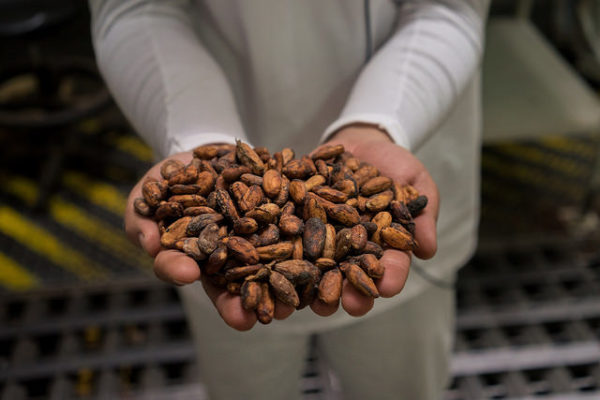Climate Change Could Pinch the World’s Chocolate Supply
A hotter, drier climate could squeeze the world’s supply of chocolate by limiting the areas where cocoa can be produced in West African countries like Ivory Coast and Ghana, according to a new study conducted by scientists from the International Center for Tropical Agriculture (CIAT). For a region that harvests 70 percent of the world’s cocoa beans, the crop’s vulnerability to climate change is becoming an evermore bitter truth.
To model how cocoa production would respond to climate conditions in the coming decades, the researchers brought together climate projections from the Intergovernmental Panel on Climate Change’s Fifth Assessment Report with rainfall and temperature data from 751 West African climate stations. They showed that parts of the West African cocoa belt, which extends from Sierra Leone to Cameroon, are in danger of becoming savanna by 2050 due to a combination of higher temperatures and increased periods of drought.

Cocoa beans will feel the heat by 2050, a new study says. Visual by USAID.
“What we found is that the savanna zone will expand southwards across West Africa,” said Christian Bunn, a climate impact researcher with CIAT and one of the study’s authors. A shifting cocoa growing region could also trigger new waves of deforestation to clear the way for new cocoa plantations, the study concludes.
Bunn and his colleagues also found that hotter, drier conditions would reduce the amount of overall area suitable for growing cocoa, with transition zones being the most vulnerable to a shifting climate. “Cocoa has historically been cultivated widely in the transition zone between wet forests and dry savanna,” Bunn wrote in an email. These zones typically experience higher temperatures and seasonal droughts and will therefore see their cocoa production hardest hit, according to the study. And 2050 is a generous estimate, Bunn said. “Most of the expected impact for 2050 will actually happen by 2030 already.”
What this means precisely for farmers on the ground is still hard to say, Bunn said. “We have repeatedly been asked by local stakeholders what this will mean quantitatively and we are still struggling to answer this question.”
This isn’t the first time CIAT has warned West Africa’s cocoa industry about its climate vulnerability. In 2013, Bunn and his team released similar predictions. This time, the researchers have updated their recommendations to cocoa farmers: “We suggest that especially in the drier and hotter parts of the cocoa belt, cocoa should be grown under increased shade cover as a protection against high dry season temperatures.” They also recommend that farmers select cocoa varieties that are drought, temperature and disease-tolerant, while intensifying cocoa production where it currently occurs and expanding new cocoa production into land that has already been deforested.
In the face of increasingly dire climatic projections, several international partnerships have cropped up in the last few years to help West African cocoa farmers adapt and implement some of these recommendations. Denmark’s universities and foreign affairs ministry have been invested for years in improving Ghana’s climate adaptation, for example. And last May, CIAT, the Rainforest Alliance, and other groups organized a workshop in Ghana to introduce climate science and adaptation strategies to government officials, cocoa farmers, and chocolate industry representatives from multinationals like Mars, a company that has said it recognizes the threat of climate change and is therefore working with farmers in West Africa to make sure cocoa doesn’t disappear. Here’s hoping.











Comments are automatically closed one year after article publication. Archived comments are below.
Incredible. the world change more everyday